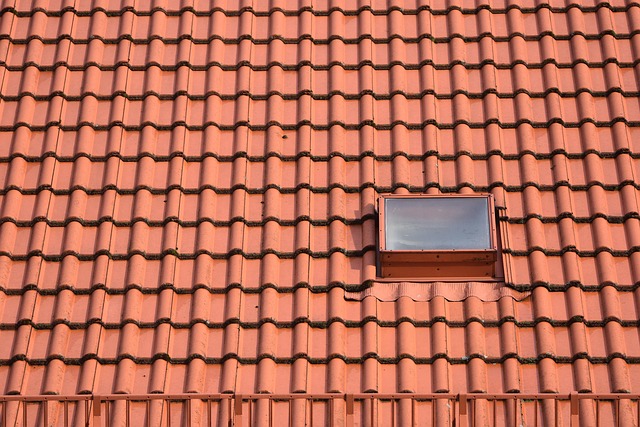Polycarbonate Sheets: Versatile Roofing Solutions for Modern Construction
Polycarbonate sheets have revolutionized the construction industry, offering a lightweight yet durable alternative to traditional roofing materials. These versatile panels are becoming increasingly popular for various applications, from residential patios to commercial greenhouses. This article explores the different types of polycarbonate roof sheets, their benefits, and how they compare to conventional roofing options.

What are the main types of polycarbonate roof sheets?
Polycarbonate roof sheets come in three primary types, each suited for specific applications:
-
Solid Polycarbonate Sheets: These are flat, transparent panels that offer excellent clarity and impact resistance. They are ideal for skylights, windows, and greenhouse roofing where maximum light transmission is desired.
-
Corrugated Polycarbonate Sheets: These sheets feature a wave-like pattern that adds structural strength. They are commonly used for industrial roofing, carports, and pergolas due to their ability to withstand heavy loads and harsh weather conditions.
-
Multiwall Polycarbonate Sheets: Also known as twin-wall or triple-wall sheets, these panels have internal air chambers that provide superior insulation. They are popular for conservatories, swimming pool enclosures, and commercial buildings where energy efficiency is crucial.
What benefits make polycarbonate ideal for roofing?
Polycarbonate sheets offer several advantages that make them an excellent choice for roofing applications:
-
UV Protection: Most polycarbonate sheets are treated with a UV-resistant coating, which prevents yellowing and degradation from prolonged sun exposure. This ensures the longevity of the roof and protects interior spaces from harmful UV rays.
-
Impact Resistance: Polycarbonate is incredibly strong, capable of withstanding impacts from hail, fallen branches, and other debris without cracking or shattering. This makes it safer than glass and more durable than many traditional roofing materials.
-
Light Transmission: Depending on the type and thickness, polycarbonate sheets can allow up to 90% light transmission. This natural illumination can reduce the need for artificial lighting, leading to energy savings in buildings.
-
Lightweight: Polycarbonate sheets are much lighter than glass or metal roofing options, making them easier to install and reducing the structural load on buildings.
-
Flexibility: The material’s flexibility allows for curved designs and unique architectural features that might be difficult or impossible with other roofing materials.
How does polycarbonate compare to traditional roofing materials?
When comparing polycarbonate to traditional roofing materials like asphalt shingles, metal, or tile, several factors come into play:
-
Cost: Initially, polycarbonate sheets may have a higher upfront cost than some traditional materials. However, their longevity and low maintenance requirements can offset this over time.
-
Durability: Polycarbonate is highly resistant to weathering, impacts, and temperature extremes. It can last 10-20 years or more with proper care, comparable to many traditional roofing options.
-
Weight: Polycarbonate is significantly lighter than materials like clay tiles or metal sheets, reducing the structural requirements and installation costs.
-
Energy Efficiency: The insulating properties of multiwall polycarbonate sheets can contribute to better energy efficiency compared to single-layer traditional roofing materials.
-
Aesthetics: While traditional materials may offer a more conventional look, polycarbonate provides modern, sleek aesthetics and the ability to incorporate natural light into designs.
What are some installation tips for long-lasting performance?
To ensure the longevity and weather resistance of polycarbonate roofing:
-
Allow for Thermal Expansion: Leave adequate space between sheets and use flexible sealants to accommodate thermal expansion and contraction.
-
Use Proper Fasteners: Employ specialized polycarbonate fasteners with neoprene washers to prevent leaks and damage to the sheets.
-
Install with Correct Slope: Ensure a minimum slope of 5 degrees to facilitate proper water drainage and prevent pooling.
-
Seal Edges: Use aluminum tape or polycarbonate closure strips to seal the edges of multiwall sheets, preventing dust and insects from entering the air chambers.
-
Clean Regularly: Gently clean the sheets with mild soap and water to maintain their clarity and performance.
What are the trending applications of polycarbonate roofing?
Polycarbonate roofing is gaining popularity in various innovative applications:
-
Greenhouses: The material’s light transmission and insulating properties make it ideal for commercial and residential greenhouses.
-
Patios and Pergolas: Homeowners are increasingly choosing polycarbonate for outdoor living spaces, appreciating its UV protection and aesthetic appeal.
-
Modern Architecture: Architects are incorporating polycarbonate into designs for its ability to create light-filled spaces and unique visual effects.
-
Solar Panel Integration: Some manufacturers are developing polycarbonate sheets with integrated solar cells, combining roofing and energy generation.
-
Modular Construction: The lightweight nature of polycarbonate makes it suitable for prefabricated and modular building systems.
Polycarbonate sheets offer a versatile, durable, and aesthetically pleasing roofing solution for a wide range of applications. With their unique combination of light transmission, impact resistance, and design flexibility, these materials are well-positioned to play an increasingly important role in modern construction and architecture. As technology advances, we can expect to see even more innovative uses for polycarbonate roofing in the future.




